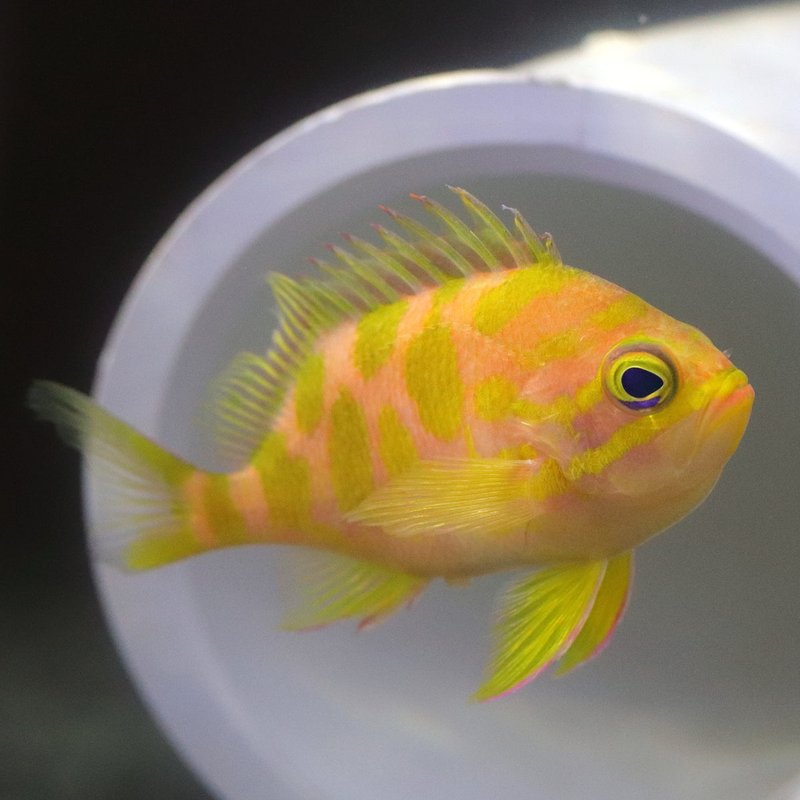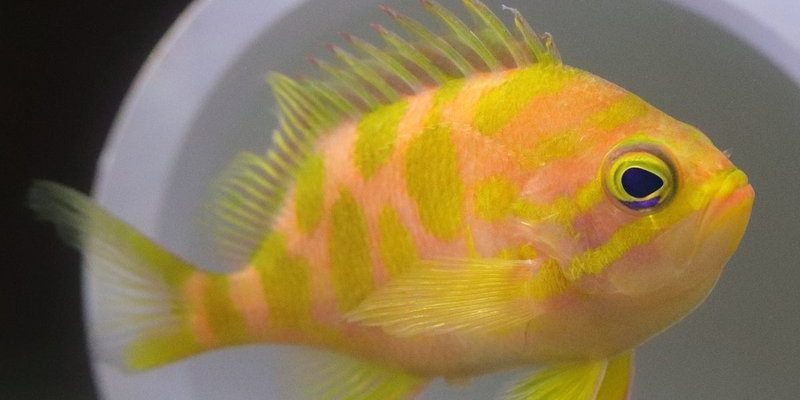
Over the years, I’ve learned that understanding these issues can help you keep your anthias happy and healthy. Just like you wouldn’t neglect your pet dog’s health, it’s essential to pay attention to these little swimmers. Let’s dive into some common health problems that anthias face and how to prevent them, making sure your fish thrive in their aquatic home.
Stress and Its Effects on Anthias
Stress is a big deal for anthias. If you’ve ever felt overwhelmed in a crowd, you can relate to how stress affects fish too. Anthias are sensitive creatures, and changes in their environment can lead to health problems. Stress can stem from various sources like poor water quality, aggressive tank mates, or even sudden changes in lighting.
You might be wondering, how do you recognize a stressed fish? Look for signs like excessive hiding, loss of appetite, or faded colors. A stressed anthias may also dart around the tank or show rapid gill movement. These behaviors are signals that something is off in their environment, and it’s crucial to act quickly to resolve the issue.
Preventing stress is all about creating a stable environment. Make sure you have a good filtration system to keep the water clean and do regular water changes. Additionally, ensure that your tank mates are compatible. Avoid placing aggressive species with your anthias to prevent aggressive interactions. By maintaining a conducive atmosphere and mindful tank dynamics, you can help minimize stress levels and keep your anthias flourishing.
Common Diseases in Anthias
Anthias, like many fish, are prone to certain diseases. Here are a few of the most common ones:
- Ich (Ichthyophthirius multifiliis): Also known as “white spot disease,” ich is a parasite that’s like the common cold for fish. Symptoms include white spots on the body and fins, along with rubbing against surfaces.
- Fin Rot: This condition can happen due to poor water quality or stress. You might notice that the fins have a ragged appearance or are turning colors.
- Brooklynella: Often seen in clownfish, this disease can also affect anthias. Symptoms include rapid gill movement and slime buildup on the fish’s body.
To combat these diseases, regular maintenance is key. Routinely checking the water parameters—like pH, temperature, and ammonia levels—can help catch problems before they escalate. Quarantining new fish before introducing them to your tank can also prevent the spread of diseases.
If you notice any symptoms, don’t hesitate to act. Medications specifically designed for aquarium fish can be very effective, but always follow the manufacturer’s directions carefully. Being proactive about your anthias’ health will pay off in the long run.
Nutritional Deficiencies in Anthias
Just like you need a balanced diet to feel your best, anthias also thrive on proper nutrition. A common problem is nutritional deficiency, which can occur when they don’t get a well-rounded diet. Anthias are carnivorous, preferring a diet rich in protein. If they’re fed mainly flake food or pellets without variety, deficiencies can lead to issues like growth problems and weakened immune systems.
To keep your anthias happy and healthy, aim for a diverse diet. Offer high-quality pellets and frozen foods like mysis shrimp, brine shrimp, and even some finely chopped seafood. You might also consider vitamin-enriched foods to boost their nutrient intake.
Besides feeding, the way you feed matters too. To mimic their natural feeding behavior, try using a feeding ring or scattering food throughout the tank. This encourages them to forage, promoting both physical and mental stimulation. It’s a win-win for both you and your fish!
Water Quality and Its Impact on Anthias
Water quality is crucial for the health of your anthias. Think of it like the air we breathe; if it’s polluted, we’re going to feel sick. Poor water quality can lead to a range of health problems and can even be fatal. Factors like ammonia, nitrite, and nitrate levels should be monitored regularly.
To ensure your fish are swimming in clean water, invest in a good filtration system and test kits. Regular water changes—about 10-20% weekly—are also vital to maintain a stable environment. If you notice spikes in ammonia or nitrites, it may be time to check your filter and consider additional biological filtration options.
Adding live plants or utilizing a refugium can help improve water quality naturally. Plus, these additions can create a more enjoyable environment for your anthias. A happy fish is a healthy fish!
The Importance of Social Structure in Anthias
Anthias are social fish and enjoy being in groups. However, this social structure can lead to problems if you don’t manage it well. In the wild, they form hierarchies, but in a home tank, the dynamics can change. If a hierarchy isn’t established, you might find one fish bullying others, which can lead to stress and even injury.
To promote a healthy social structure, consider keeping a group of anthias rather than just one. The general rule is to have at least three or more of the same species. Also, make sure your tank is spacious enough to allow them to establish their pecking order without excessive aggression.
If aggression does become an issue, you might need to rearrange the tank or add more hiding spots. This way, the fish can escape aggression and find comfort. Remember, creating a peaceful community tank contributes significantly to the overall health of your anthias.
Caring for anthias may seem daunting at first, but understanding their common health problems makes it much easier. By keeping stress levels low, maintaining water quality, providing a balanced diet, and ensuring a harmonious social structure, you can create an environment where your anthias can thrive.
Ultimately, being proactive and observant about your fish’s well-being fosters a vibrant aquarium filled with healthy, happy anthias. So, enjoy the process, learn along the way, and remember: your fish rely on you for their happiness and health!

